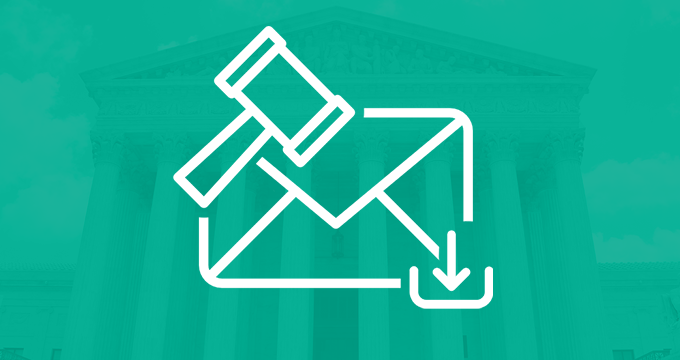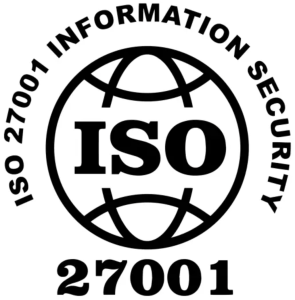Email archiving is mandatory for companies in regulated industries. Automating the process will increase efficiency, simplify email management, and minimize errors.
Here’s what we’ll cover in this article on automated archiving:
- An overview of email retention laws
- Challenges of email management
- What automated archive systems are
- How automated archiving makes your life easier
- Must-have archive features
Email Retention Laws Overview
In the past, data retention laws weren’t too strict as all business communication was either verbal or through paper documents.
However, with the rise of email communication, more and more business-critical data started to move through digital channels, which made it harder to track and regulate.
That’s why retention laws were amended to include electronically stored information as valid business records. This made it mandatory for them to be retained for long periods.
These are the key laws regulating email retention:
- Sarbanes Oxley — Mandates the retention of electronic communications, including emails, relevant to financial reporting for a minimum of five years.
- GLBA — Requires financial institutions to implement safeguards to protect customer data, including email.
- FOIA — Grants public access to certain government records, including emails, requiring government agencies to establish email archiving systems for compliance and transparency.
- FRCP — Requires organizations to preserve electronic information, including emails, for potential litigation, shaping email archiving policies, and procedures in legal contexts.
Before automated archiving systems first appeared, there were two major ways for employees to preserve records of their online communication:
- Print the email and store it as regular paper documents
- Take a picture of it and save it in physical form (typically as printed screenshots).
This worked well before the passing of email retention laws as businesses only needed to keep a record of their most important emails.
However, now that every email needs to be retained for anything between 5 and 7 years, printing millions of emails wasn’t viable or sustainable. Another issue was that, if printed, the documents would lose the necessary metadata and could be easily misplaced or lost in natural disasters.
The goal was clear — all email communication needed to be retained, but the solution to managing business email was a lot more complicated and nuanced.
Biggest Email Management Challenges
Under different data retention laws, all email communication needs to be preserved for at least five years depending on the legislation.
Now let’s add some context.
An average corporate worker sends and receives 120 email messages a day and has an average of 200 unread emails in their inbox. It’s also interesting to know that the average professional spends 28% of their workday reading and answering emails.
Now imagine retaining 120 emails per day per employee for at least five years. This presents huge problems in terms of email management most aren’t even aware of.
These challenges come in the form of:
- Technical limitations — Business email servers aren’t equipped to handle huge loads of emails making them slow down.
- Email search — Trying to find information becomes impossible especially when open data requests require fast responses.
- Unnecessary data — It’s difficult to track when certain emails can be deleted after their retention period expires.
- Litigation risks — Inadequate email retention practices can expose businesses to legal risks in the event of litigation or regulatory investigations.
- Increased costs — Retaining email requires businesses to spend more on storage. Finding legal evidence in your email requires external parties to get involved for the process to be finished in a timely manner.
- Security — Retaining email on official business email servers makes it easier for hackers or rogue employees to take advantage of your data.
- Accidents — It’s easy for employees to delete emails without a way to get them back accidentally.
With all of these challenges, a new way of managing email retention has emerged — automated archiving systems.
What Are Automated Archive Systems?
Automated archive systems are cloud-based software that retains vast amounts of communications data without the need for manual human work.
The technology was invented to save time and effort spent on email management, increase productivity, and reduce human error.
Automated archiving software captures all incoming and outgoing emails and preserves it in a central repository on the cloud, protected by AES encryption standards.
They capture all the content of emails, including their metadata (date and time, recipients, or attachments), and index it, making it easy for businesses to search for information throughout their archive.
Automated archive systems take care of email management by automatically labeling all emails with custom retention policies. Once these policies expire, the labeled emails are automatically deleted from the system.
The purpose of automated archiving is to make your job easier while keeping you compliant.
Benefits of Automated Archiving
Some of the most important benefits of automated archiving are:
Improved productivity
Anything you can automate is a plus for your team’s productivity.
Instead of manually saving all email communications, keeping track of its retention data, and managing it, letting an automated archive do this leaves your team with more free time.
Your IT department isn’t meant to be working on archiving and compliance, they should be able to focus on more important tasks.
Cost-effectiveness
If you were to attempt to archive your emails without an automated archiving solution, you could end up with multiple servers and hard drives.
These servers need to be kept running constantly as well as maintained. Hard drives need to be backed up regularly onto additional hard drives. The costs of running and maintaining this system increase all the time.
An automated email archive eliminates these costs. Instead, all of this data can be kept in the cloud for compliance purposes while leaving you enough space for important data.
Regulatory compliance
Compliance laws are very strict — you need to archive all data without any slip-ups. This is almost impossible, as the risks of human error are just too big.
Automated archives retain data in real time, making it impossible for anything to go past it.
Along with retention, features like message integrity check allow you to prove that this data wasn’t tampered with.
Retrieval
Besides capture and storage capabilities, email archives are meant to help you with litigation and data analysis.
By indexing all the captured data, archives are made easily searchable with multiple advanced filtering options like Boolean, keyword, proximity, and fuzzy search options.
This means routine archive checks can be performed quickly, or, in litigation cases, legal costs are kept down by reducing the time spent collecting information.
This will help your IT and legal teams save a lot of time by simply automating the archiving process.
Must-Have Automated Archiving System Features
An automated archiving system is designed to minimize manual work.
To help with this goal, modern archiving systems are built with specific features allowing you to set up the whole system and let it run by itself.
When looking for your new archive, keep an eye out for these set-it-and-forget-it features:
- Automated data capture — The system needs to capture all incoming and outgoing communications data in real-time, without the need for human validation.
- Multi-data archiving — Besides email data, new laws require the archiving of social media, mobile messages, WhatsApp, and other forms of data which your systems should be able to capture automatically.
- Custom retention policies — Manually setting up retention policies for different types of data and laws that govern them. The system can understand them and take over the data management role.
- Automated tagging — With each new piece of data being captured, the system should automatically label the data with the correct retention policy. This will make it easier for you to search and manage it.
- Data deletion and deduplication — The system needs to automatically delete all duplicate data and monitor for when a retention policy expires to make your storage management optimal.
The archiving industry is ever-evolving and automated archiving systems are getting better every day with new features.
We recommend you first understand what to look for in your email archiving solution and work together with your IT team to choose the best vendor.
| Related: Top 5 Email Archiving Software Features |
Conclusion
Email retention is necessary for any regulated organization that wants to stay compliant.
Automated archiving systems make it easy for you to retain and manage email properly without worrying about server performance or the risks of human error.
Solve all of your email archiving and ediscovery needs with Jatheon’s archiving solution built for businesses of all sizes. Stay compliant, speed up your ediscovery, and retain all of your business data in one easy-to-use solution.
Read Next:The Importance of Email Archiving – 18 Reasons to Archive Email |











